This is the one hundred eighty-sixth entry in the Scratching That Itch series, wherein I randomly select and write about one of the 1741 games and game-related things included in the itch.io Bundle for Racial Justice and Equality. The Bundle raised $8,149,829.66 split evenly between the NAACP Legal Defense and Education Fund and Community Bail Fund, but don’t worry if you missed it. There are plenty of ways you can help support the vital cause of racial justice; try here for a start. Lastly, as always, you may click on images to view larger versions.
Our one hundred eighty-sixth random selection from the itch.io Bundle for Racial Justice and Equality has crash-landed on an alien planet, and immediately started growing crops. It’s Verdant Skies, by HowlingMoonSoftware, and its tagline in the bundle reads:
Ensure the success of your colony as you make friends and pursue romance…
Romance, by way of farming.
Verdant Skies is a life sim, but unlike classics of the genre like The Sims, it’s one with a specific focus on farming. That means its inspirations are more along the lines of Harvest Moon (now known as Story of Seasons), or more recently, the smash hit Stardew Valley. Despite its popularity, I’ve never played Stardew Valley, nor am I very familiar with Story of Seasons, Animal Crossing, or other similar games. But I gather that Verdant Skies is a bit different, also taking inspiration from visual novels or dating sims. It emphasizes developing relationships with other characters (complete with huge, lovingly drawn portraits), all of whom can eventually be romanced (though not necessarily at the same time, as some are monogamous) if the player wishes.
The other difference is that Verdant Skies is set on an alien planet. All the characters, including the player character, are colonists building a new town on the world of Viridis Primus, financed by a giant corporation. But Viridis Primus isn’t all that alien, full of analogues to terrestrial animals and plants, often with some sort of space-themed pun name, like “rocket rice” or “celestial cabbage”. It does look pretty nice, though, with the occasional patch of purple weeds or strange flowers and mushrooms as accents to its general Earthyness. Even the familiar green grass and trees look great, rendered with crisp 2D art, yet laid out in a pseudo-3D manner that lets buildings or other tall objects jut upwards as they should, and land almost curl into view as players walk around. I especially love the reflections in ponds and puddles. It’s a lovely world to start a life in.
At the beginning of the game, the player character is only the third colonist to arrive. Friendly mechanic Rosie — who is blind, but does not seem limited by that in the least — and standoffish administrator Jade are the only company. But as players start growing crops and building up the town, more colonists will join, each with their own personality and desires, and each able to provide useful aid. Botanist Wyatt has a genetic combiner machine is his lab, that lets players create genetically modified crops to increase their yield, or have them regrow automatically after harvesting (and much more). Shopkeeper Miles will sell simple resources like wood and stone, so players no longer need to laboriously collect them on their own. But most importantly, players can start building relationships with these characters, by talking with them every day, and completing their “collections”, sets of thematically appropriate items that must be grown or crafted. Build up the relationship bar enough, and a special story scene with that character will be triggered, and players are placed on the next relationship “tier”, able to build the bar up again until the next special scene. Climb enough tiers, and romance (and even marriage and children) is possible.
I didn’t get that far. I gather that a big part of the appeal of Stardew Valley and its ilk is player freedom: set up your farm however you like, be it a huge and highly efficient layout, an artistic arrangement that pleases the eye, or a haphazard mess that just gets the job done with minimal planning. Verdant Skies doesn’t have any of that. The fields for growing crops are in specific places on the map, and each only has room to grow a few things. Town upgrades, like the Pioneer Plaza I built early on, appear in preset locations. I had some freedom in terms of where to plop down equipment or decorations, but otherwise I was just following along with a set of tasks. Or, sometimes, was left without any tasks, and just kind of wandered around looking for resources I needed to build stuff.
The list of checkboxes in Verdant Skies was soon all too clear. I might have a task to explore the swampy area, but I need better boots first, which means I need to collect resources to make some, which means… you are probably familiar with this pattern. Equipment or machines are crafted by collecting a bunch of components, some of which are first made from other components. Maybe some of them can only be made with the right device, which means making one of those first, with its own list of components. Most tasks, like planting and watering crops or chopping down trees, drain a bunch of stamina and also take a lot of time, fast-forwarding the clock. Stamina can be restored by sleeping (waking up the next morning), or eating food, which is cooked through an identical system to crafting equipment, complete with ingredients that have their own ingredients. Most big things require scrap, which cannot be made and must be scavenged by wandering the map, which is a slow process. It doesn’t help that access to a lot of the more advanced stuff is doled out slowly as players progress in the story and build up relationships with other colonists, so there isn’t a real way to speed up the process.
Then again, Verdant Skies is deliberately going for a slow, relaxed pace. Viridis Prime is a beautiful planet, the other characters are generally pleasant, everything is peaceful. There’s no rush. Crops take several in-game days to grow, even if watered regularly. Avoid too much manual labor, and there will be plenty of time to wander and explore, or chat with their colleagues. Some players will love this, relishing the stress-free experience of a peaceful offworld colony. They don’t even need to do any farming if they don’t want to. But it seems that the main draw story-wise — the visual novel components — task players with growing certain crops and gathering the right resources to build stuff. Those are the triggers needed to advance the story and get more colonists to join the town.
Sometimes those triggers are clear, as overt tasks from other colonists. Other times they’re not. I was explicitly told to build the Pioneer Plaza so we could recruit a photojournalist to help promote the colony, but no one ever asked me to build the bridge across the river to the east. Turns out that opens up several new fields to grow crops in, as well as clay to start doing pottery, which is needed for some of the colonists’ collections. Eager players will seek these things out anyway, just because they want to see more of Viridis Prime, but those (like me) who find the tasks a bit tedious will lament being unable to recruit new colonists and build relationships with them faster.
And the thing is, I was curious about many of the characters. Early on I was trying to become friends with Jade, hoping there was some more humanity to uncover underneath her brisk, company line demeanor. That meant telling her exactly what she wanted to hear with regards to my character’s productivity, and never showing any resentment at the corporation that wanted me to pay for their crashed shuttle, even though it was totally their fault. I did get to see some hints that she’s more than her job, but I could also see just how much time I’d have to sink into the game in order to get anywhere with her. Or any of the other characters (who are much friendlier right off the bat!), for that matter. I simply didn’t have the patience for it. But for those who are invested in building up the colony, it’s not necessarily a negative, since there will still be more to uncover about each colonist even after spending a lot of time expanding the town. The characters are fairly one-note from what I saw, but they may turn out to be more nuanced later on. They’re also a diverse bunch, and players have similarly broad options for own their character’s appearance.
There’s so much more in Verdant Skies that I didn’t get to. It’s a full-size game, with slick production values, that’s definitely not skimping on stuff to do. I hadn’t recruited five of the colonists yet. There are different biomes that can grow different types of crops, but require upgraded tools to do so. I’d only just found the mines in the mountains that contain minerals and gems. I never actually did any pottery, or domesticated any animals. There are all sorts of fish to catch, with a different set in each biome, as well as insects to collect. Some of the stuff that can be built is really advanced, requiring computer chips and other fancy components. If players do get romantically involved with another colonist, they can have a baby, who will eventually grow up and help out around town. Again, certain players will love all this! It’s just not for me. I wanted to learn more about the other colonists, but not enough to engage with all of the in-game chores that would be required.
If you think such a game might be your thing, however, by all means give Verdant Skies a look. If you missed it in the bundle, it’s sold for a minimum price of $19.99, which is a fair price for a game with this much stuff in it.
That’s 186 down, and only 1555 to go!

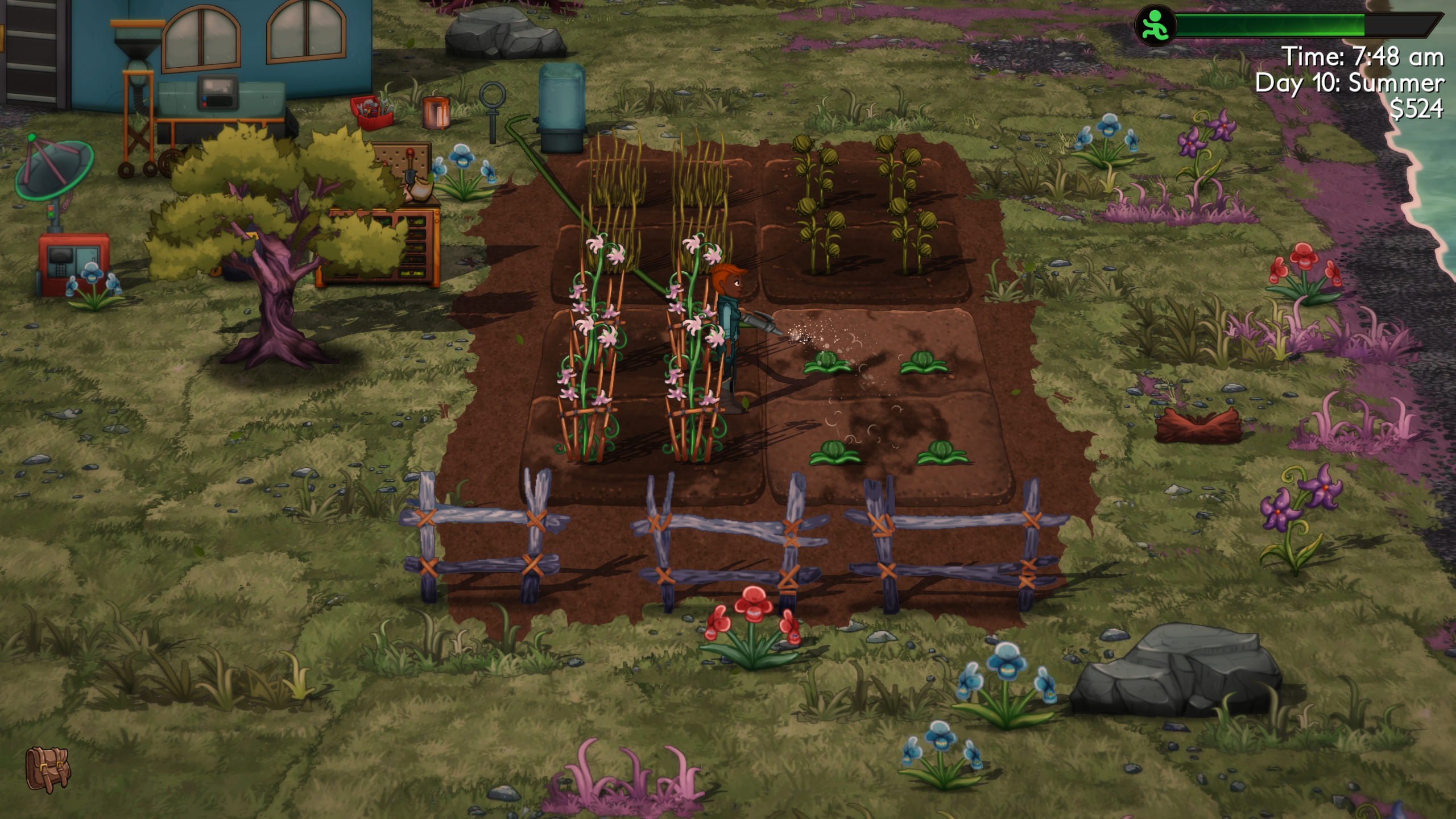
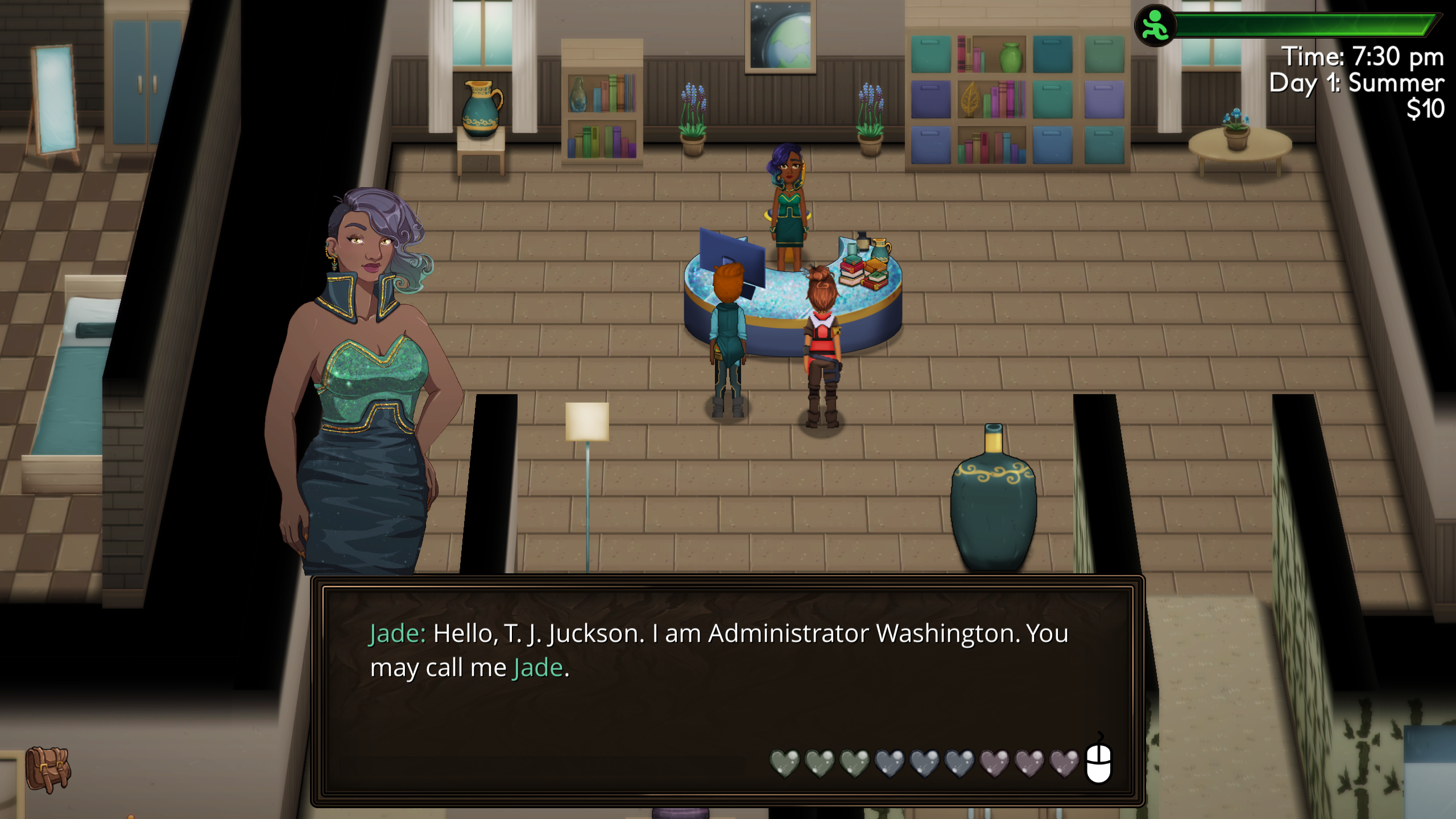
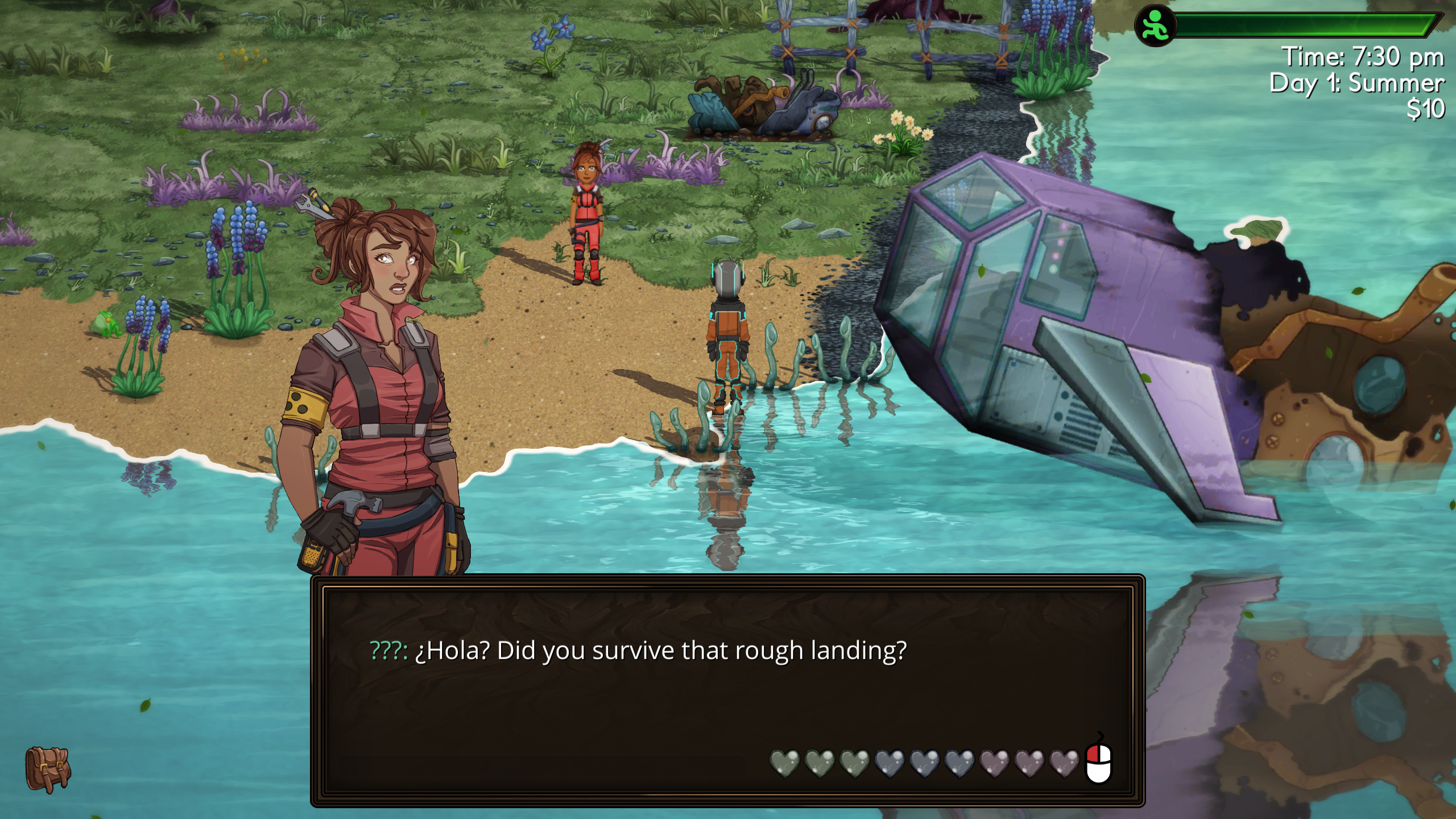
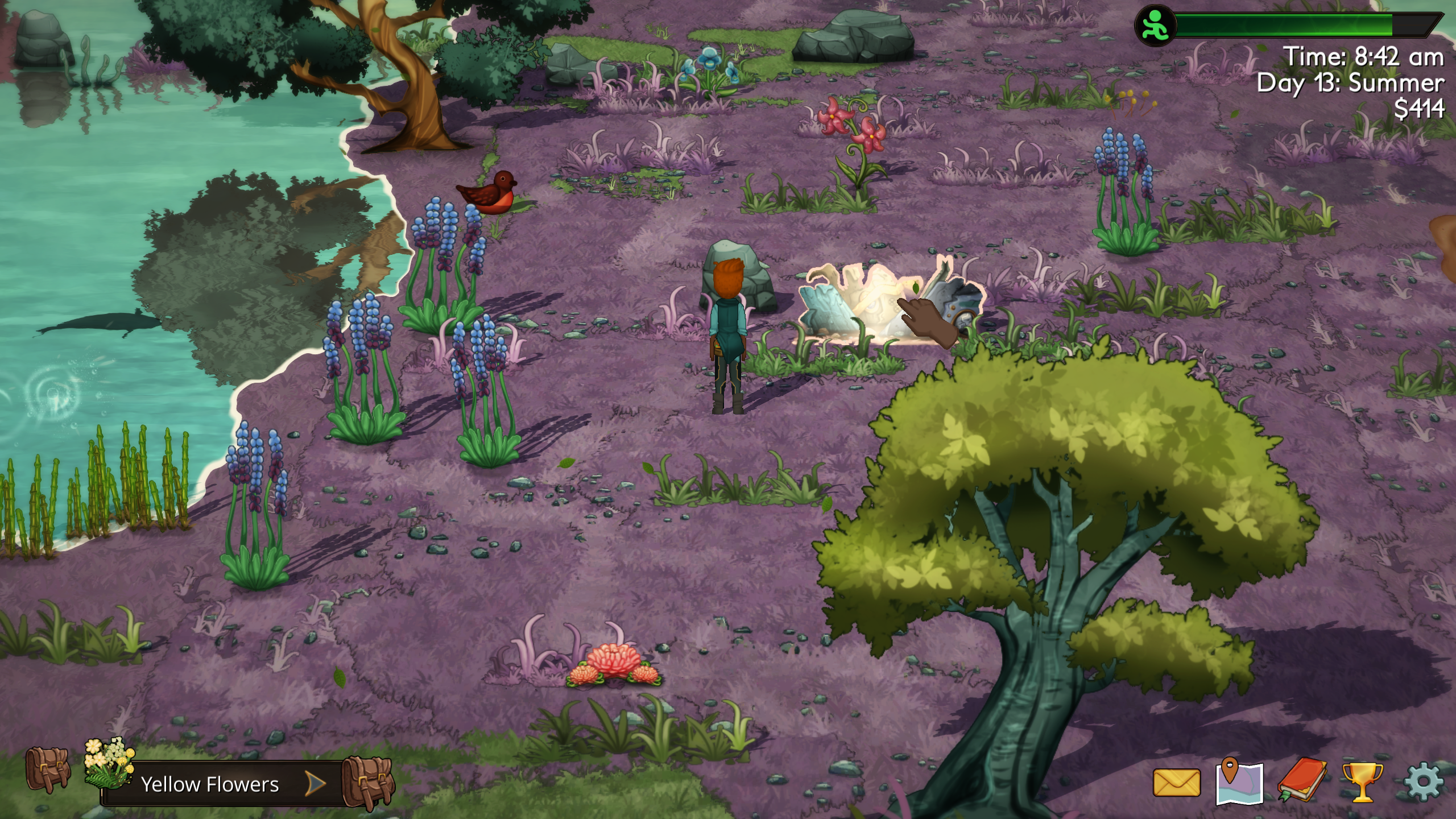
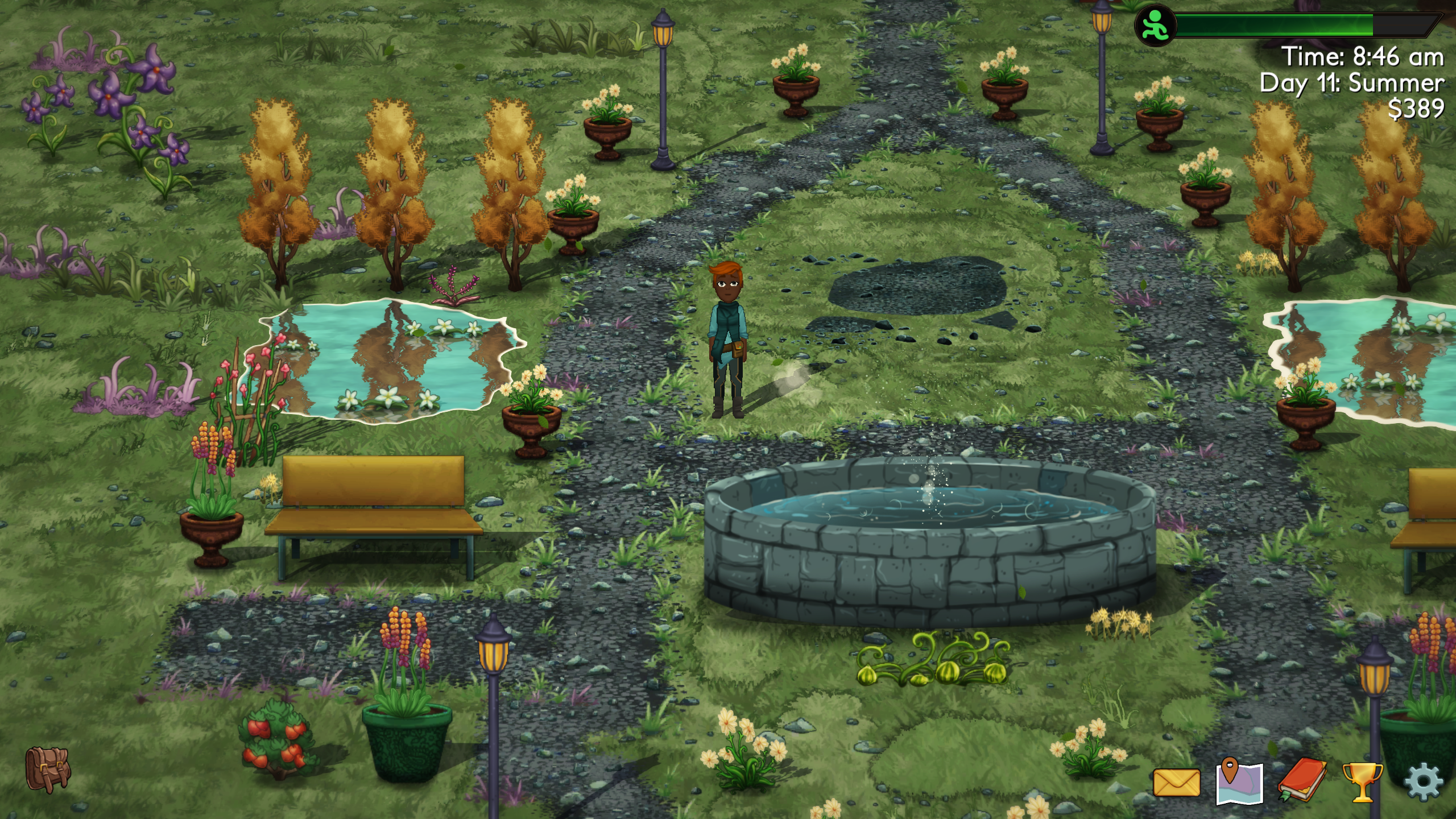
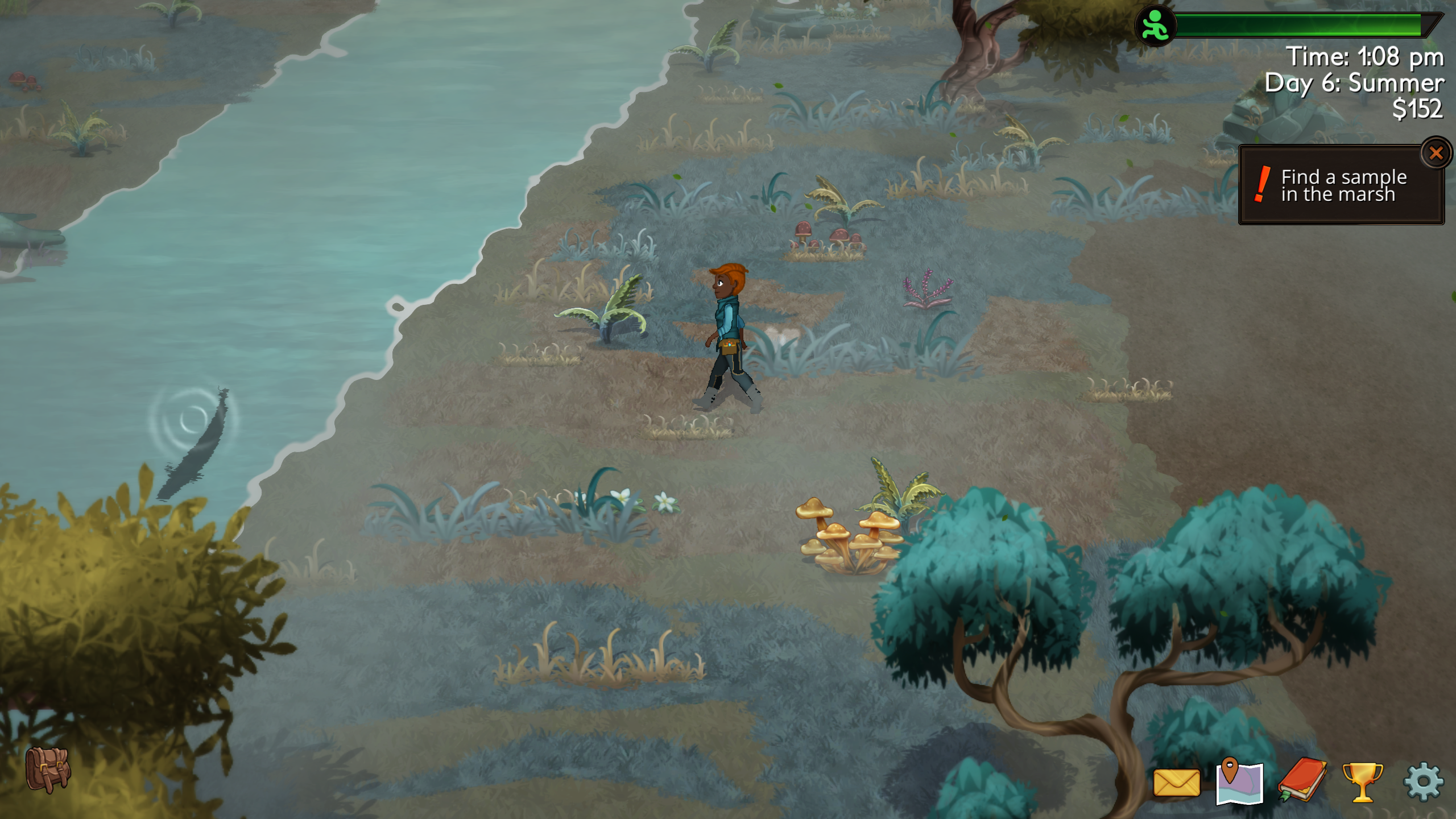
Leave a Reply